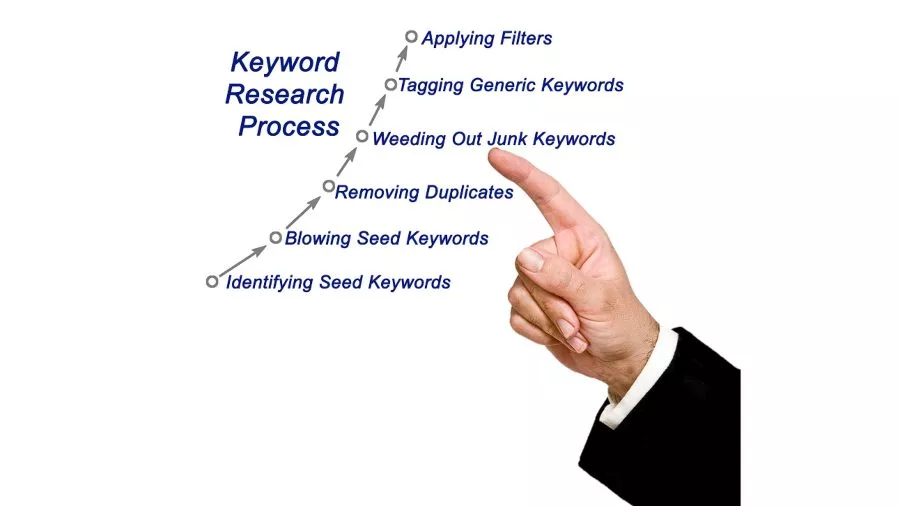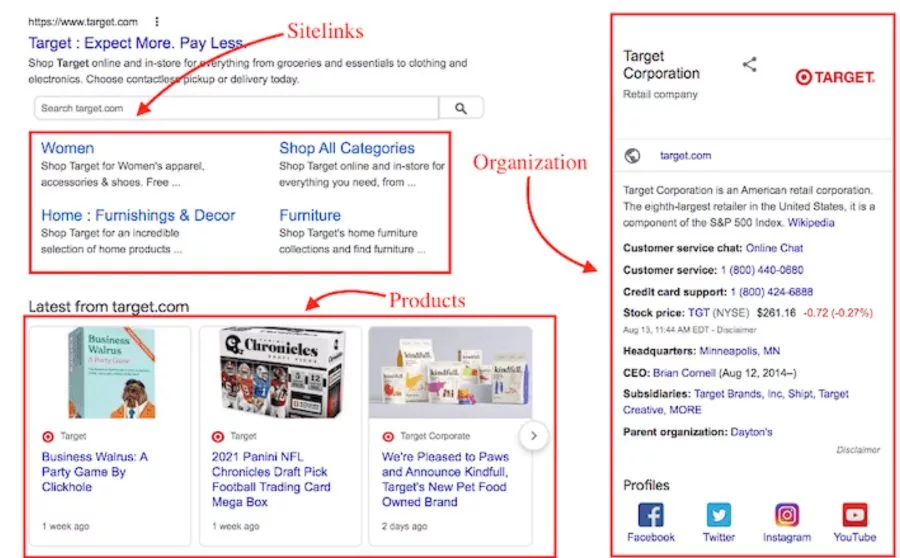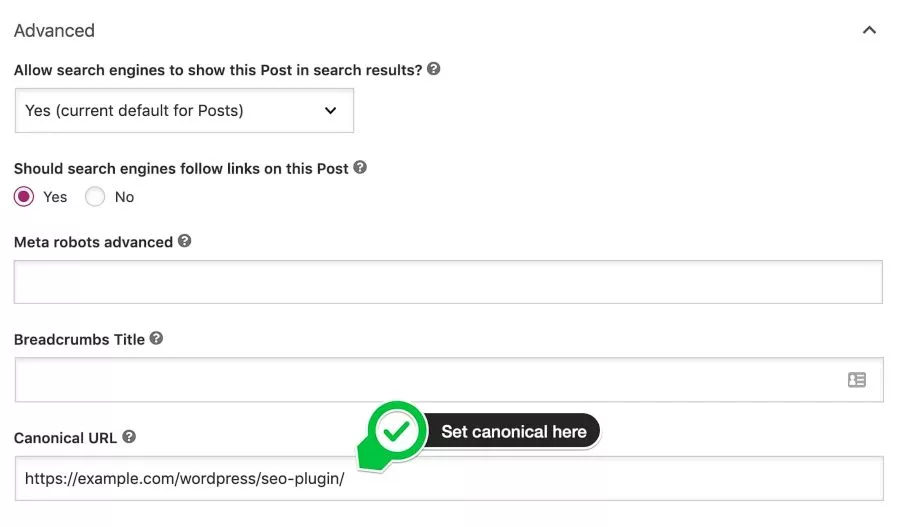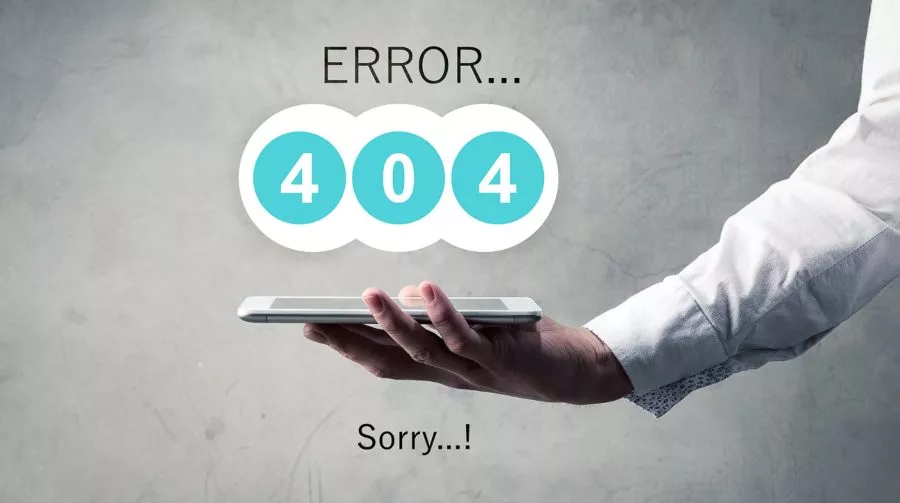18 On-Page SEO Techniques To Rank On First Page
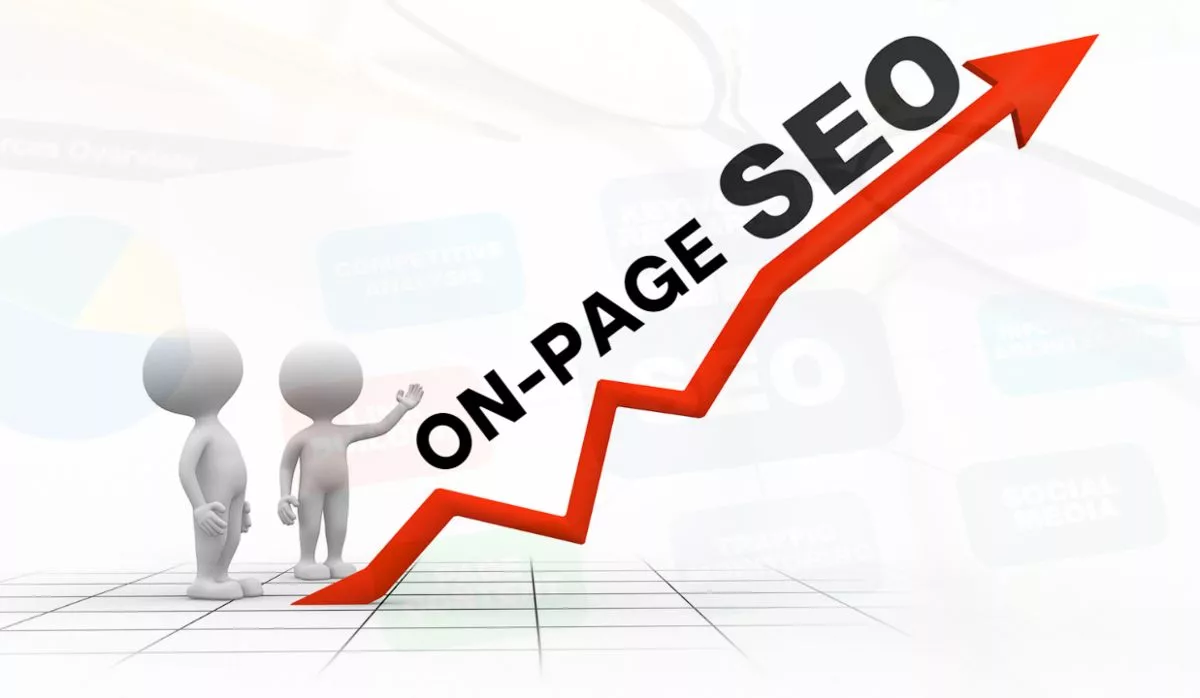
Contents
- 1 Introduction
- 2 1. Keyword Research and Optimization
- 3 2. Content Optimization
- 4 3. URL Structure and Permalinks
- 5 4. Image Optimization
- 6 5. Internal Linking
- 7 6. Mobile Responsiveness
- 8 7. Page Loading Speed
- 9 8. User Experience and Dwell Time
- 10 9. Social Media Integration
- 11 10. Schema Markup
- 12 11. Regular Content Updates
- 13 12. HTTPS and Security
- 14 13. Canonical Tags
- 15 14. Content Readability
- 16 15. Analytics and Monitoring
- 17 16. 404 Error Pages
- 18 17. Content Distribution
- 19 18. User Reviews and Ratings
- 20 Conclusion
Introduction
In the vast landscape of the digital world, where websites jostle for visibility, on-page SEO stands as the unsung hero, silently shaping the destiny of web pages in the search engine realm. This introduction serves as a compass, guiding us through the intricacies of on-page SEO, shedding light on its paramount importance, and unraveling the profound impact it wields on search engine rankings.
A. Importance of On-Page SEO
On-page SEO, or search engine optimization, is the art and science of optimizing individual web pages to rank higher and earn more relevant traffic in search engines. It’s the fine-tuning of elements on a webpage to not only make it more attractive to search engines but, more importantly, to enhance the user experience. Imagine on-page SEO as the meticulous gardener, cultivating a website to flourish and bloom in the fertile soils of search engine results.
In the vast digital landscape, where information is abundant and attention spans are fleeting, on-page SEO becomes the beacon that guides search engines to understand the content and purpose of a webpage. From strategically placed keywords to well-crafted meta descriptions, every detail counts in the on-page SEO playbook.
B. The Impact of On-Page SEO on Search Engine Rankings
The digital arena is a competitive battleground, and securing a spot on the coveted first page of search engine results is akin to claiming a throne in the kingdom of visibility. On-page SEO is the secret weapon in this conquest. Search engines, led by ever-evolving algorithms, scrutinize websites for relevance, authority, and user-friendliness. A masterfully executed on-page SEO strategy can significantly influence a website’s ranking, propelling it to the forefront of search results.
At its core, on-page SEO is about aligning a webpage with the expectations of search engines. The better a page aligns, the more likely it is to be deemed worthy of a higher ranking. It’s not just about getting more eyes on your content; it’s about ensuring those eyes are the right ones—users actively seeking what you have to offer.
C. Providing 18 Effective On-Page SEO Techniques
In the digital realm, knowledge is power, and arming oneself with effective strategies is the key to triumph. The purpose of this article is clear—to equip you with not just one or two but a comprehensive arsenal of 18 on-page SEO techniques. These are not mere tricks; they are tried-and-tested methods, the building blocks that can elevate your website from the shadows to the spotlight.
As we delve into each technique, the aim is not just to provide information but to empower. Whether you’re a seasoned webmaster or a budding entrepreneur managing your first website, these techniques are tailored to demystify the complexities of on-page SEO and set you on a path to commanding search engine rankings. So, buckle up as we embark on a journey through the intricacies of on-page SEO, unlocking the secrets to online visibility and success.
1. Keyword Research and Optimization
In the vast expanse of the digital landscape, where words are the currency and relevance is the king, mastering the art of keyword research and optimization is the gateway to on-page SEO success.
A. Conducting Thorough Keyword Research
1. Tools and Strategies for Keyword Research
The foundation of effective on-page SEO lies in understanding what your audience is searching for. This journey begins with comprehensive keyword research, a process akin to mining for gold in the vast caverns of search engine queries.
- Google Keyword Planner: This stalwart tool, offered by the search giant itself, provides insights into keyword search volumes, competition, and related terms. It’s the compass that points you toward the keywords most likely to lead you to SEO prosperity.
- Ubersuggest: A versatile tool that not only helps identify keywords but also provides insights into competitors’ strategies. Ubersuggest is the sleuth in your SEO toolkit, unraveling the mysteries of what works in your niche.
Answer the Public: Uncover the questions your audience is asking with this unique tool. It’s not just about keywords; it’s about understanding the queries that lead users to your doorstep.
2. Identifying Long-Tail Keywords
While short, high-competition keywords might be the battleground, the war is often won with long-tail keywords. These are the specific, niche phrases that may have lower search volumes but are incredibly valuable in capturing intent.
- Understand User Intent: Long-tail keywords often reveal user intent more precisely. Tailoring your content to these intentions not only boosts your on-page SEO but also enhances user satisfaction.
- Embrace Variations: People search in different ways. Embrace the variations and nuances of your primary keywords to cast a wider net and capture diverse search queries.
B. Optimizing Meta Titles and Descriptions
1. Crafting Compelling and Relevant Titles
The title tag is your webpage’s first impression on the digital stage—a chance to captivate the audience and beckon them closer. Crafting compelling titles is an art that intertwines creativity with strategic keyword placement.
- Strategic Keyword Placement: Infuse your title with primary keywords. However, avoid overstuffing—let it flow naturally within a captivating and click-worthy headline.
- Length Matters: Google displays around 50-60 characters of a title tag. Ensure your title is concise, impactful, and conveys the essence of your content within this limit.
2. Writing Informative Meta Descriptions
If the title is the headline, the meta description is the teaser—a snippet that compels users to click through. Crafting informative meta descriptions is an integral part of on-page SEO strategy.
- Provide Value: In a concise manner, convey what your page offers. Let users know the value they’ll gain by clicking through to your content.
- Include a Call-to-Action (CTA): Encourage action with a well-placed CTA. Whether it’s to learn more, discover, or find a solution, guide your audience on the next step.
In the intricate dance of on-page SEO, keyword research and optimization are the choreography that leads the audience—the search engine and the user—exactly where you want them. Mastering this dance ensures your content takes center stage, capturing attention, and earning the spotlight it deserves.
2. Content Optimization
In the realm of on-page SEO, where content reigns supreme, mastering the art of content optimization is the key to unlocking the gates of digital prominence.
A. Creating High-Quality, Valuable Content
1. Understanding User Intent
The bedrock of content optimization is an intimate understanding of what the user seeks. User intent goes beyond mere keywords; it delves into the motivations, questions, and problems users bring to the search bar.
- Keyword Alignment: Align your content with user queries. Anticipate what users want and ensure your content not only answers but exceeds their expectations.
- Diversify Content Formats: Users consume information differently. Incorporate a mix of text, images, videos, and interactive elements to cater to varied preferences.
2. Importance of Unique and Engaging Content
In the vast ocean of digital content, uniqueness is the beacon that guides the lost ship to the shore. Engaging content isn’t just a luxury; it’s the currency that buys attention and loyalty.
- Originality Matters: Search engines favor original content. Copying content not only adversely affects your SEO but also undermines your credibility. Strive for uniqueness in every piece you publish.
- User Engagement Signals: How users interact with your content matters. Comments, shares, and time spent on a page are signals to search engines that your content is valuable and worthy of attention.
B. Proper Use of Header Tags
1. Structuring Content with H1, H2, H3 Tags
The architecture of your content is not just about aesthetics; it’s a roadmap for both users and search engines. Properly structured content ensures a seamless journey through your information landscape.
- Hierarchy of Information: H1 tags represent the main heading, providing a roadmap for the content that follows. H2 tags denote subsections, and H3 tags further break down the information. This hierarchical structure enhances readability and user experience.
- Logical Flow: Each header should lead naturally to the next, guiding the reader through your content like a well-orchestrated story. This logical flow not only aids user understanding but also signals to search engines that your content is well-organized.
2. Incorporating Target Keywords in Headers
Headers aren’t just for aesthetics; they’re a canvas to paint with strategic keyword strokes. Properly incorporating target keywords amplifies your on-page SEO efforts.
- Strategic Placement: Place primary keywords in H1 tags, signaling to search engines the main focus of your content. Sprinkle related keywords in H2 and H3 tags to provide context and depth.
- Avoid Keyword Stuffing: While strategic keyword use is vital, avoid stuffing headers with keywords. Maintain a natural, reader-friendly flow while ensuring search engines recognize the thematic relevance.
In the symphony of on-page SEO, content optimization is the melody that lingers in the minds of both users and search engines. Craft your content with care, infuse it with value, and orchestrate its structure to resonate not just with algorithms but with the hearts and minds of your audience.
3. URL Structure and Permalinks
In the intricate tapestry of on-page SEO, the URL of your webpage is not just an address; it’s a roadmap, guiding both users and search engines through the digital landscape. Let’s delve into the art of crafting SEO-friendly URLs and optimizing permalinks for maximum impact.
A. Crafting SEO-Friendly URLs
1. Short and Descriptive URLs
In the world of on-page SEO, brevity is not just the soul of wit; it’s the essence of effective URLs. Crafting concise, descriptive URLs is the first step towards ensuring your webpage is easily discoverable and comprehensible.
- Clarity is Key: A well-structured URL provides users and search engines with a clear indication of the content they can expect. Avoid unnecessary jargon and keep it succinct.
- Include Keywords Naturally: If possible, incorporate your target keywords in the URL. This not only aids in SEO but also reinforces the thematic relevance of your content.
2. Avoiding Unnecessary Parameters
The elegance of an effective URL lies in its simplicity. Unnecessary parameters can clutter the URL and create confusion for both users and search engines.
- Trim the Fat: Remove unnecessary parameters and characters that do not contribute to the user’s understanding of the content. A clean URL enhances user experience and facilitates better indexing.
- User-Friendly URLs: Think of your URL as a signpost. Make it user-friendly by avoiding complex strings of numbers or symbols. A user should be able to glance at the URL and have a general idea of the page’s content.
B. Optimising Permalinks for Readability and Relevance
1. Using Hyphens to Separate Words
- Hyphens are the unsung heroes of URL readability. They serve as the spaces between words in a URL, contributing to both user-friendliness and search engine interpretability.
- Enhance Readability: Replace spaces with hyphens to improve the visual clarity of your URL. For example, turn “onpageSEOtips” into “on-page-SEO-tips.”
- Search Engine Interpretation: Search engines recognize hyphens as word separators, aiding in the proper interpretation of your target keywords. This small adjustment can have a significant impact on your on-page SEO.
2. Including Target Keywords in Permalinks
Your URL is not just a navigation tool; it’s a strategic asset in the on-page SEO battlefield. Incorporating target keywords in permalinks is a subtle yet impactful tactic.
- Strategic Keyword Placement: Integrate your primary keywords naturally into the URL. This reinforces the relevance of your content and signals to search engines the thematic focus of your page.
- Avoid Keyword Stuffing: While keywords are essential, strike a balance. Avoid stuffing too many keywords into the URL, as this can appear spammy and harm the user experience.
In the grand symphony of on-page SEO, the URL structure is the overture—the first notes that set the tone for the entire composition. Craft your URLs with precision, ensuring they serve as both a guide for users and a signal to search engines, leading your content towards the pinnacle of online visibility.
4. Image Optimization
In the visual tapestry of on-page SEO, images are not just pixels on a screen; they are the visual storytellers that captivate audiences and enhance user experience. Let’s explore the nuances of image optimization, a crucial facet of on-page SEO that goes beyond aesthetics.
A. Compressing Images for Faster Loading Times
Images add vibrancy to your content, but their hefty file sizes can slow down your website’s loading speed, a crucial factor in the world of on-page SEO.
1. The Need for Speed:
- Impact on User Experience: A slow-loading website can drive visitors away. Compressing images ensures a seamless and swift user experience, enhancing satisfaction and reducing bounce rates.
- Search Engine Favoritism: Speed matters to search engines. Websites that load quickly are often favored in search rankings. Compressing images contributes to the overall speed optimization of your page.
B. Adding Descriptive Alt Text
While search engines are adept at analyzing text, they rely on additional cues to comprehend images. Alt text is the bridge that connects the visual and textual realms of your on-page SEO strategy.
1. Importance for Accessibility
- Inclusion for All Users: Alt text serves a dual purpose—it provides context for search engines and aids accessibility for users with visual impairments. It’s the textual description that ensures your content is inclusive.
- SEO for All: Search engines consider accessibility as a positive ranking factor. By enhancing the accessibility of your images through alt text, you not only cater to a diverse audience but also bolster your on-page SEO.
2. Enhancing Keyword Relevance
- Strategic Keyword Integration: Alt text provides an opportunity to infuse relevant keywords associated with your content. This strategic integration reinforces the thematic relevance of your page.
- Avoid Keyword Stuffing: While keywords are crucial, maintain a natural balance. Alt text should be descriptive and informative, ensuring it genuinely reflects the content and purpose of the image.
In the visual symphony of on-page SEO, image optimization is the harmonious chord that resonates with both users and search engines. Compressing images ensures a swift, delightful user experience, while descriptive alt text not only aids accessibility but also enhances the keyword relevance of your content. As we navigate the intricate landscape of on-page SEO, let your images not just be adornments but strategic allies in the quest for digital visibility.
5. Internal Linking
In the intricate architecture of on-page SEO, internal linking is the structural engineer—forging connections, enhancing navigation, and influencing the flow of authority within your website. Let’s unravel the art of internal linking, a dynamic strategy that goes beyond mere navigation.
A. Connecting Related Content Through Internal Links
Internal linking is more than a network of pathways within your website; it’s a deliberate strategy to guide both users and search engines to relevant content. The interconnected web of your site not only aids navigation but also influences the hierarchy of information.
1. Navigational Harmony:
- Guiding User Journeys: Internal links serve as signposts, guiding users on a seamless journey through your content. Connect related articles, guides, or products to provide a holistic experience.
- Enhancing User Engagement: When users find what they’re looking for effortlessly, they are more likely to stay on your site. Internal links contribute to a positive user experience, reducing bounce rates and fostering engagement.
B. Using Descriptive Anchor Text
The language of internal links is not just about guiding clicks; it’s a strategic dialogue with search engines, conveying the context and relevance of linked content.
1. Boosting User Experience
- Anchor Text as a Guide: The words you choose for your anchor text are the guiding lights for users. Opt for descriptive anchor text that clearly indicates what users can expect when they click.
- Contextual Clarity: If the anchor text accurately reflects the content it leads to, users are more likely to engage. Contextual clarity enhances the overall user experience, ensuring that expectations align with the delivered content.
2. Distributing Link Equity Strategically
- Spread the SEO Wealth: Internal links are not just about guiding users; they also influence the distribution of link equity within your site. Link to important pages strategically to boost their authority.
- Reinforce Key Pages: If you have cornerstone content or important pages that should carry more weight in search rankings, use internal links to reinforce their significance. This is a subtle yet powerful on-page SEO tactic.
In the intricate dance of on-page SEO, internal linking is the choreography that influences how users traverse your website and how search engines interpret your content hierarchy. Craft your internal links with purpose, guiding users on meaningful journeys and strategically distributing the SEO equity that propels your most important pages to the forefront of search engine results.
6. Mobile Responsiveness
In the era of on-page SEO, where users wield devices of varying sizes and shapes, mobile responsiveness is not just a feature; it’s the cornerstone of a user-centric digital presence. Let’s explore the imperative of ensuring a mobile-friendly website design, delving into Google’s mobile-first indexing and responsive design best practices.
A. Ensuring a Mobile-Friendly Website Design
1. Google’s Mobile-First Indexing
- A Paradigm Shift: Google’s mobile-first indexing is not just an algorithmic tweak; it’s a paradigm shift in how the search giant evaluates and ranks websites. In this mobile-centric era, Google prioritizes the mobile version of content for indexing and ranking.
- Mobile-Optimized Content: To thrive in the on-page SEO landscape, your website must not merely accommodate mobile users but actively cater to them. Mobile-optimized content isn’t an option; it’s a necessity for securing a prominent place in search engine results.
2. Responsive Design Best Practices
- Fluid Grids and Flexible Images: Responsive design is the art of flexibility. Employ fluid grids and flexible images that adapt seamlessly to different screen sizes. This ensures your content looks polished and functions optimally across devices.
- Media Queries for Customization: Use media queries to apply specific styles for different devices. This allows you to tailor the user experience, ensuring that your website is not just functional but visually appealing on mobile screens.
- Touch-Friendly Navigation: Mobile users interact differently. Optimize your on-page SEO by incorporating touch-friendly navigation elements, making it easy for users to explore your content with a swipe or tap.
In the dynamic landscape of on-page SEO, mobile responsiveness is not just a checkbox; it’s a strategic imperative. Google’s mobile-first indexing demands that your website caters to the preferences of mobile users. Embrace responsive design best practices, ensuring that your content not only adapts to different devices but shines in the eyes of both users and search engines.
7. Page Loading Speed
In the fast-paced arena of on-page SEO, where user attention is a fleeting commodity, the loading speed of your pages is not just a convenience; it’s a decisive factor that can make or break your digital presence. Let’s delve into the crucial significance of fast-loading pages for SEO and explore the tools that can measure and enhance your page speed.
A. Importance of Fast-Loading Pages for SEO
1. User Experience as a Ranking Factor:
- Impacts User Satisfaction: The importance of fast-loading pages extends beyond mere convenience. Users expect instant access to information, and a slow-loading page can lead to frustration and a higher likelihood of bouncing.
- Bounce Rate and Rankings: High bounce rates, triggered by sluggish page speeds, send negative signals to search engines. Google and other search giants prioritize user experience, making page loading speed a pivotal factor in determining search rankings.
2. Mobile Optimization and Page Speed:
- Mobile Users Expectations: In the mobile-centric landscape, users demand instant gratification. Fast-loading pages are not just a luxury; they are the norm for mobile users who are on-the-go and seeking quick answers.
- Google’s Mobile-First Approach: Google’s mobile-first indexing intensifies the importance of mobile optimization. Fast-loading mobile pages are not just user-friendly; they align with Google’s indexing priorities, positively impacting your on-page SEO.
B. Tools to Measure and Improve Page Speed
1. Google PageSpeed Insights:
- Insights for Optimization: Google PageSpeed Insights is not just a tool; it’s a compass guiding you through the intricacies of page speed optimization. It provides a score for your webpage and offers actionable insights to enhance loading times.
- Prioritized Recommendations: From image optimization to server response times, Google PageSpeed Insights breaks down recommendations into prioritized tasks, empowering you to focus on the most impactful improvements first.
2.GTmetrix and Other Performance Tools:
- Comprehensive Performance Metrics: Tools like GTmetrix go beyond basic insights, providing comprehensive metrics on your page’s performance. From page loading times to optimization opportunities, these tools offer a holistic view of your website’s speed.
- Performance Grades and Waterfall Charts: GTmetrix and similar tools assign performance grades, making it easy to gauge your page’s overall speed health. Waterfall charts visually represent the loading sequence, helping you identify bottlenecks.
- Actionable Suggestions: Performance tools not only diagnose issues but also offer specific suggestions for improvement. Whether it’s optimizing images, leveraging browser caching, or reducing server response times, these tools equip you with actionable steps for on-page SEO enhancement.
In the dynamic ecosystem of on-page SEO, page loading speed is the silent conductor that orchestrates user satisfaction and search engine favoritism. The importance of swift-loading pages extends beyond convenience; it is a strategic imperative that can elevate your website from the depths of search results to the pinnacle of digital prominence.
8. User Experience and Dwell Time
In the intricate dance of on-page SEO, where user engagement is the heartbeat, cultivating a positive user experience and optimizing for longer dwell time are not just strategies; they are the essence of a thriving digital presence. Let’s explore the art of enhancing overall user experience and the tactics to extend user dwell time.
A. Enhancing Overall User Experience
1. Intuitive Navigation:
- User-Friendly Pathways: Intuitive navigation is the compass that guides users through your digital landscape. Streamline your website’s architecture to ensure visitors can effortlessly navigate from point A to point B.
- Clear Information Hierarchy: Users should intuitively understand the hierarchy of information. Implement clear headings, logical categorizations, and easy-to-follow menus to enhance the overall user experience.
2. Clear Calls-to-Action:
- Guiding User Actions: Calls-to-action (CTAs) are the beckoning signposts that guide users toward desired actions. Whether it’s making a purchase, subscribing, or exploring more content, ensure your CTAs are prominent, clear, and enticing.
- Strategic Placement: Position CTAs strategically throughout your content. They should align with the user’s journey, prompting them to take the next step without causing distraction or confusion.
B. Optimizing for Longer Dwell Time
1. Engaging Multimedia Content:
- Visual Storytelling: Engaging multimedia content is the art of visual storytelling. Incorporate images, videos, infographics, and other visually appealing elements that captivate and sustain user interest.
- Reducing Bounce Rates: Multimedia content not only enhances the aesthetic appeal of your pages but also reduces bounce rates. Users are more likely to linger when presented with a visually stimulating and informative experience.
2. Relevant Internal Linking:
- Guide to Deeper Insights: Internal linking isn’t just about navigation; it’s a strategic tool to guide users to deeper insights. Link relevant articles, guides, or product pages within your content, encouraging users to explore more.
- Contextual Signposts: Each internal link should be a contextual signpost, providing additional value to the user. The more seamlessly users can transition between related content, the longer they are likely to dwell on your site.
In the symphony of on-page SEO, user experience and dwell time are the melodic notes that resonate with both users and search engines. By crafting an intuitive, engaging journey and strategically guiding users to linger longer, you not only enhance the user experience but also send positive signals to search engines, ultimately elevating your digital presence to new heights.
9. Social Media Integration
In the dynamic landscape of on-page SEO, where digital conversations unfold across platforms, social media integration is not just a feature; it’s the bridge that connects your content with a global audience. Let’s explore the strategies of seamlessly incorporating social media elements into your on-page SEO, from sharing options for content to leveraging Open Graph tags for optimal social media presence.
A. Sharing Options for Content
1. User-Friendly Sharing Options:
- Empower Users to Share: Integrate user-friendly social media sharing options seamlessly into your content. Whether it’s a blog post, product page, or insightful article, users should be one click away from sharing your content across their preferred social channels.
- Diversify Platforms: Cater to a diverse audience by including sharing options for various social platforms—Facebook, Twitter, LinkedIn, Pinterest, and more. Each share is not just a visibility boost; it’s a potential avenue for new audiences.
B. Open Graph Tags for Social Media Platforms
1. Optimising Content Appearance When Shared:
- Crafting Appealing Previews: Open Graph tags are the architects of how your content appears when shared on social media. Craft compelling titles, descriptions, and preview images to entice users scrolling through their feeds.
- Consistent Branding: Use Open Graph tags to ensure consistent branding. The visual elements and messaging should align with your brand identity, creating a cohesive experience for users encountering your content on social platforms.
2. Encouraging Social Signals for SEO:
- Social Signals and SEO Harmony: Social signals—likes, shares, comments—aren’t just vanity metrics; they resonate in the corridors of search engine algorithms. Encourage social engagement to send positive signals that can influence your on-page SEO.
- Content Virality Impact: The more users engage with and share your content on social media, the more likely it is to gain traction. Viral content not only expands your reach but can also attract backlinks, a powerful SEO factor.
In the symphony of on-page SEO, social media integration is the harmonious chord that amplifies your content’s resonance. By offering seamless sharing options and optimizing the appearance of your content on social platforms, you not only foster user engagement but also create a symbiotic relationship between your on-page SEO efforts and the vast expanse of social media conversations.
10. Schema Markup
In the intricate tapestry of on-page SEO, where search engines seek to understand the nuances of your content, schema markup emerges as the language that bridges the gap between the digital realm and search algorithms. Let’s delve into the art of implementing schema markup for rich snippets, exploring the benefits of enhanced search results and the diverse types of schema markup tailored for different content.
A. Implementing Schema Markup for Rich Snippets
1. Benefits of Enhanced Search Results:
- Stand Out in Search Results: Schema markup transforms your content snippets in search results from mere text to rich, visually appealing snippets. This enhanced presentation captures attention and distinguishes your content from competitors.
- Improved Click-Through Rates: Users are naturally drawn to visually appealing and informative snippets. Implementing schema markup can significantly boost click-through rates, driving more traffic to your on-page content.
2. Types of Schema Markup for Different Content:
- Article Schema Markup: Tailor-made for blog posts, news articles, and other textual content, Article schema markup provides search engines with structured information about the headline, author, and publication date.
- Product Schema Markup: E-commerce pages benefit from Product schema markup, showcasing details like price, availability, and ratings directly in search results. This not only informs users but also establishes your product’s credibility.
- Review Schema Markup: For businesses seeking to highlight customer feedback and ratings, Review schema markup adds stars and key review details to your search snippet, influencing user trust and decision-making.
- FAQ Schema Markup: FAQ schema helps your frequently asked questions stand out in search results. This is particularly beneficial for providing quick, informative answers to user queries directly in the search snippet.
- Video Schema Markup: Video content can benefit from Video schema markup, displaying information such as duration, upload date, and thumbnail in search results. This increases the visibility and appeal of your video content.
- Event Schema Markup: Businesses organizing events can use Event schema markup to provide details like date, time, and venue directly in search snippets. This improves the visibility of your events and encourages attendance.
In the evolving landscape of on-page SEO, schema markup is the linguistic key that unlocks advanced search result features. By implementing schema markup tailored to your content, you not only enhance the visual appeal of your snippets but also provide search engines with structured data, ensuring your content is not just seen but truly understood.
11. Regular Content Updates
In the dynamic landscape of on-page SEO, where relevancy is the currency and user expectations evolve, regular content updates emerge as the heartbeat that keeps your digital presence vibrant and in tune with the ever-changing rhythms of the online world. Let’s explore the significance of fresh and updated content, and the strategic approach to establishing a content update schedule.
A. Significance of Fresh and Updated Content
1. User Relevance and Engagement:
- Meeting User Expectations: Users seek information that is not just accurate but also current. Regularly updating your content ensures that your audience receives the latest insights, keeping them engaged and satisfied.
- Long-Term Relevance: Evergreen content becomes a timeless resource when consistently updated. By incorporating the latest information, trends, and developments, your content remains a relevant asset over the long term.
2. Search Engine Favouritism:
- Freshness as a Ranking Factor: Search engines value fresh content. Regular updates signal to search algorithms that your content is actively maintained, potentially contributing to improved rankings.
- Algorithmic Recency Bias: Some search queries favor recent content. By updating existing pages or creating new ones on emerging topics, you align with search engine algorithms that prioritize recency for specific queries.
B. Establishing a Content Update Schedule
1. Recurring Updates for Evergreen Content:
- Identifying Evergreen Content: Pinpoint cornerstone content that remains relevant over time. Develop a recurring update schedule for these pieces, ensuring they reflect the latest industry insights or advancements.
- Seasonal Relevance: Some evergreen content may have seasonal aspects. Update accordingly to keep the information current and align with the changing needs and interests of your audience.
2. Identifying Outdated Information:
- Regular Audits: Conduct regular content audits to identify pages that may contain outdated information. This proactive approach helps you catch inconsistencies and inaccuracies before they impact user trust or search rankings.
- User Feedback Channels: Leverage user feedback and comments as valuable indicators of outdated content. Users often highlight areas that need updating or clarification, contributing to the ongoing improvement of your on-page content.
In the symphony of on-page SEO, regular content updates are the crescendo that echoes your commitment to providing value and staying at the forefront of your industry. By understanding the significance of fresh content, establishing a content update schedule, and actively identifying and addressing outdated information, you not only meet user expectations but also maintain a resilient and high-performing digital presence.
12. HTTPS and Security
In the ever-evolving realm of on-page SEO, where user trust and data security are paramount, the adoption of HTTPS stands not just as a safeguard but as a symbol of commitment to a secure digital experience. Let’s explore the imperative of securing websites with HTTPS, understanding its impact on search rankings, and why it’s more than a technical necessity—it’s a trust-building cornerstone.
A. Securing Websites with HTTPS
1. Encryption for Data Protection:
- Guarding User Data: HTTPS (Hypertext Transfer Protocol Secure) encrypts the data exchanged between a user’s browser and your website. This encryption is like a secure envelope for information, preventing unauthorized access or tampering during transmission.
- E-commerce Imperative: For websites handling sensitive information, such as login credentials or payment details, HTTPS is not just a best practice; it’s an essential layer of defense against potential security threats.
B. Impact on Search Rankings
1. Google’s Preference for Secure Sites:
- Algorithmic Preference: Google, the gatekeeper of search rankings, expresses a preference for secure sites. Websites with HTTPS enjoy a slight advantage in search rankings, reflecting Google’s commitment to promoting a secure online environment.
- Ranking Tiebreaker: In scenarios where two pages demonstrate similar relevance, Google may prioritize the one with HTTPS. This subtle preference underscores the search giant’s emphasis on user security.
2. Building Trust with Users:
- Visual Trust Indicators: Beyond algorithmic advantages, HTTPS contributes to the visual trustworthiness of your website. Users are more likely to trust and interact with a site that displays the reassuring padlock symbol in the address bar.
- SEO and User Trust Convergence: The symbiotic relationship between on-page SEO and user trust is evident in the adoption of HTTPS. A secure website not only aligns with search engine preferences but also enhances the user’s perception of your brand.
In the symphony of on-page SEO, HTTPS is the harmonic chord that resonates with both search algorithms and user trust. Beyond its technical prowess in data encryption, HTTPS reflects a commitment to providing a secure and trustworthy digital environment. As search engines continue to prioritize security, adopting HTTPS is not just a best practice; it’s a strategic investment in the resilience and credibility of your online presence.
13. Canonical Tags
In the intricate tapestry of on-page SEO, where precision is key and content duplication can be a labyrinthine challenge, canonical tags emerge as the navigational markers that guide search engines through the maze. Let’s delve into the art of implementing canonical tags for duplicate content, understanding their role in preventing issues with search engines, from consolidating link equity to sidestepping content duplication penalties.
A. Implementing Canonical Tags for Duplicate Content
1. Identifying Duplicate Content:
- Content Across Pages: Duplicate content can inadvertently spread across different pages of your website. Identify instances where similar or identical content appears in multiple locations.
- Dynamic Content Variations: Content management systems and dynamic parameters can sometimes generate multiple versions of a page with slight variations. Recognize these nuances to address potential duplication.
2. Canonical Tags as Directives:
- Guiding Search Engines: Canonical tags serve as explicit directives to search engines, indicating the preferred or original version of a page when duplicate content exists. They are a tool for webmasters to guide the focus of search engine crawlers.
- Inserting Canonical Tags: Integrate canonical tags within the HTML of the duplicate pages, specifying the canonical (preferred) version. This ensures that search engines understand which iteration to prioritize in their indexing.
B. Preventing Issues with Search Engines
1. Consolidating Link Equity:
- Link Equity Distribution: Duplicate content can inadvertently split link equity across multiple versions of a page. By implementing canonical tags, you consolidate link equity, reinforcing the authority of the canonical version.
- Enhancing SEO Impact: Search engines interpret consolidated link equity as a signal of page importance. This can positively impact the search rankings of the canonical page, boosting its visibility in search engine results.
2. Avoiding Content Duplication Penalties:
- Search Engine Penalization Risks: Search engines aim to deliver diverse and relevant results to users. Deliberate or unintentional content duplication can lead to penalization, where search engines may demote or exclude duplicated pages.
- Canonical Tags as a Safeguard: Canonical tags act as a safeguard against content duplication penalties. By proactively specifying the canonical version, you communicate to search engines that any duplicate instances are intentional and properly managed.
In the symphony of on-page SEO, canonical tags are the harmonious notes that ensure clarity amid the complexity of duplicate content. By implementing these tags strategically, you not only guide search engines to prioritize the correct version but also consolidate link equity, fortifying the SEO impact of your preferred content iteration.
14. Content Readability
In the dynamic landscape of on-page SEO, where the user’s journey through your content is akin to a well-guided expedition, the importance of content readability cannot be overstated. Let’s delve into the art of using concise and clear language, optimizing content for easy readability, and exploring specific techniques like bullet points, subheadings, and font styles and sizes.
A. Using Concise and Clear Language
1. Clarity as a Priority:
- Eliminate Jargon: Speak the language of your audience. Remove unnecessary jargon and technical terms that might hinder understanding. Effective communication relies on the foundation of clarity.
- Precision in Expression: Be precise in your expressions. Clearly convey ideas without unnecessary embellishments. Each sentence should contribute directly to the reader’s understanding.
B. Optimising Content for Easy Readability
1. Bullet Points and Subheadings:
- Breaking Down Information: Break down complex information into digestible chunks. Utilize bullet points to present lists, and employ subheadings to create logical divisions within your content.
- Visual Scannability: Users often scan content before committing to a full read. Bullet points and subheadings enhance the visual scannability of your content, allowing users to quickly grasp key points.
2. Font Styles and Sizes:
- Readable Font Choices: Opt for fonts that are easy on the eyes. Sans-serif fonts like Arial or Calibri are commonly preferred for online content due to their readability. Ensure an adequate font size for comfortable reading, typically 16px or higher.
- Hierarchy with Headings: Use a clear hierarchy of font sizes for headings and subheadings. Larger font sizes for main headings and progressively smaller sizes for subheadings create a visual hierarchy that guides the reader through your content.
In the symphony of on-page SEO, content readability is the melody that resonates with your audience. By using concise and clear language, you not only enhance user understanding but also create a more inclusive experience. The strategic use of bullet points, subheadings, and thoughtfully chosen font styles and sizes ensures that your content is not just seen but comprehended, fostering a positive user experience and reinforcing the impact of your on-page SEO efforts.
15. Analytics and Monitoring
In the ever-evolving arena of on-page SEO, where data is the compass guiding strategic decisions, the setup of robust analytics and consistent monitoring is not just a best practice; it’s the vigilant guard ensuring the health and efficacy of your digital presence. Let’s explore the meticulous process of setting up Google Analytics and the ongoing monitoring practices essential for on-page SEO success, including tracking keyword rankings and analyzing user behavior.
A. Setting up Google Analytics
1. Creating a Google Analytics Account:
- Navigate to Google Analytics: Begin by navigating to the Google Analytics platform and creating an account if you don’t have one. Follow the step-by-step process to set up your account and website properties.
- Installing Tracking Code: After creating an account, obtain the unique tracking code for your website. Integrate this code into the HTML of your web pages. This code is the bridge that connects your website to the wealth of data in Google Analytics.
B. Regular Monitoring of On-Page SEO Performance
1. Tracking Keyword Rankings:
- Keyword Ranking Tools: Leverage keyword ranking tools to monitor the performance of your target keywords. Track fluctuations in rankings over time to understand the impact of your on-page SEO efforts.
- Identifying Trends: Analyze keyword ranking trends. Identify keywords that are gaining prominence and those that may require additional optimization. This insights-driven approach allows you to refine your on-page SEO strategy continuously.
2. Analysing User Behavior:
- User Flow Analysis: Dive into the user flow within your website. Understand how visitors navigate through your pages, identifying popular entry points and exit points. This analysis unveils user preferences and areas for improvement.
- Page Engagement Metrics: Explore metrics like bounce rate, time on page, and page views. High bounce rates may signal content mismatch, while longer time on page suggests engaging content. Use these insights to enhance the user experience and align content with user expectations.
In the symphony of on-page SEO, analytics and monitoring are the orchestral notes that harmonize your strategic efforts with real-world insights. By setting up Google Analytics, you not only gain a panoramic view of your website’s performance but also lay the foundation for ongoing monitoring. Regular tracking of keyword rankings and meticulous analysis of user behavior empower you to adapt and refine your on-page SEO strategy, ensuring a dynamic and responsive digital presence that resonates with both users and search engines.
16. 404 Error Pages
In the intricate dance of on-page SEO, where user experience is paramount, addressing 404 error pages becomes an artful endeavour, not just to navigate pitfalls but to turn stumbling blocks into stepping stones. Let’s explore the craft of customising 404 error pages and the strategic redirection of broken links, unravelling the impact on user experience and the savvy techniques to minimise negative SEO effects.
A. Customizing 404 Error Pages
1. Tailoring User-Friendly Messages:
- Friendly Explanations: A well-crafted 404 page goes beyond mere apologies; it explains, in user-friendly language, that the requested page couldn’t be found. This transparency prevents frustration and guides users on their journey.
- Navigation Options: Include clear navigation options on your custom 404 page. Users who encounter a dead end should easily find alternative routes to explore your website further.
B. Redirecting Broken Links to Relevant Content
1. Impact on User Experience:
- Seamless Navigation: Redirecting broken links ensures that users aren’t met with dead ends. Instead, they are seamlessly guided to relevant content, maintaining a positive and uninterrupted browsing experience.
- Retaining Engagement: Broken links can lead to frustration and prompt users to leave your site. By redirecting, you retain engagement, preventing potential bounce rates and fostering user trust in your website’s reliability.
2. Minimising Negative SEO Effects:
- Avoiding SEO Detriment: Broken links send negative signals to search engines, potentially impacting your site’s SEO. By promptly redirecting broken links to relevant content, you mitigate the risk of SEO penalties and maintain a favourable standing in search results.
- Preserving Link Equity: Redirects preserve the link equity associated with the broken link. This strategic preservation ensures that the value of backlinks and internal links is not lost, contributing positively to your on-page SEO efforts.
In the symphony of on-page SEO, addressing 404 error pages is not a setback but an opportunity to showcase your commitment to user experience and technical finesse. By customising 404 error pages with user-friendly messages and redirecting broken links strategically, you not only enhance the journey for your visitors but also safeguard your website’s SEO integrity. It’s a nuanced dance that transforms potential stumbling blocks into navigational aids, ensuring your on-page SEO performance is not just resilient but continually refined.
17. Content Distribution
In the dynamic realm of on-page SEO, where visibility is the heartbeat and reach extends beyond the confines of your website, content distribution emerges as the strategic choreography that propels your message to diverse audiences. Let’s explore the art of promoting content through various channels, from the vibrant landscapes of social media platforms to the personalized corridors of email newsletters and outreach.
A. Promoting Content Through Various Channels
1. Social Media Platforms:
- Strategic Posting: Share your on-page content strategically across different social media platforms. Tailor your messaging to align with the nuances of each platform, maximizing engagement and interaction.
- Visual Appeal: Leverage the visual appeal of platforms like Instagram and Pinterest by incorporating eye-catching visuals. Create a cohesive narrative that encourages users to click through to your on-page content.
- Engagement and Sharing: Drive active involvement with your audience on social media by responding to comments, posing questions, and promoting content sharing. The more your content is shared, the broader its reach, positively impacting both visibility and on-page SEO.
2. Email Newsletters and Outreach:
- Curated Newsletters: Include snippets of your on-page content in curated email newsletters. Craft compelling subject lines to entice recipients to explore more. Email newsletters offer a direct and personalized avenue for content distribution.
- Outreach to Influencers: Collaborate with influencers or thought leaders in your industry. Their endorsement and sharing of your on-page content can significantly amplify its reach. Build relationships and leverage outreach for mutually beneficial content distribution.
- Personalized Outreach Emails: Craft personalized outreach emails to share your on-page content with relevant individuals or organizations. Highlight the value your content brings and why it aligns with their audience or interests.
In the symphony of on-page SEO, content distribution is the crescendo that elevates your message from mere existence to resonant impact. By strategically promoting content across social media platforms, harnessing the power of email newsletters, and engaging in purposeful outreach, you not only broaden your content’s reach but also cultivate a dynamic ecosystem where your on-page SEO efforts reverberate far beyond the boundaries of your website.
18. User Reviews and Ratings
In the intricate landscape of on-page SEO, where user perception is a compass guiding your digital reputation, user reviews and ratings become not just testimonials but vital signals shaping local SEO and establishing trust. Let’s explore the art of encouraging user-generated content and the strategic impact of user reviews and testimonials on local SEO and trust signals.
A. Encouraging User-Generated Content
1. Creating an Inclusive Environment:
- Inviting Feedback: Actively encourage your audience to share their experiences by inviting feedback. Make it clear that their opinions are valued and integral to the community.
- Interactive Platforms: Provide interactive platforms on your website where users can leave reviews, rate products, or share testimonials. Make the process user-friendly to enhance participation.
B. Impact on Local SEO and Trust Signals
1. Responding to User Reviews:
- Interactive Dialogue: Respond promptly to user reviews, whether positive or negative. Engaging in an interactive dialogue showcases your commitment to customer satisfaction and can positively influence local SEO.
- Addressing Concerns: Address any concerns or issues raised in negative reviews professionally and empathetically. This not only resolves specific problems but also demonstrates transparency and a dedication to improvement.
2. Integrating Testimonials Strategically:
- On-Page Testimonial Placement: Integrate positive testimonials strategically within your website’s pages. Whether it’s product pages, service descriptions, or landing pages, placing testimonials in relevant contexts reinforces trust.
- Rich Snippet Implementation: Utilize schema markup to showcase user ratings and reviews in search engine results. This not only enhances your website’s visibility but also provides immediate trust signals to potential visitors.
In the symphony of on-page SEO, user reviews and ratings are the resonant chords that echo the sentiments of your audience. By actively encouraging user-generated content, responding thoughtfully to reviews, and strategically integrating testimonials, you not only shape a positive local SEO landscape but also foster a trustworthy online environment. It’s a dynamic interplay where user voices become a powerful asset, influencing not just perceptions but the very fabric of your digital presence.
Conclusion
In the tapestry of on-page SEO, where the digital landscape is ever-shifting, our exploration of 20 techniques has illuminated the path to not just visibility but sustained success. As we conclude this journey, let’s recap the key on-page SEO techniques, emphasize the perpetual evolution of SEO practices, and encourage readers to implement and adapt these strategies for enduring success.
Emphasis on the Continuous Evolution of SEO Practices
As we stand at the crossroads of today’s SEO landscape, it’s crucial to acknowledge that the digital terrain is ever-evolving. SEO is not a static destination but a continuous journey. Staying abreast of industry trends, algorithm updates, and emerging technologies is paramount for sustained success in on-page SEO.
Encouraging Readers to Implement and Adapt These Techniques for Sustained Success
The knowledge gained from these 18 on-page SEO techniques is a formidable toolkit for navigating the complexities of the digital realm. Yet, knowledge alone is not transformative—it requires action. We encourage readers to implement these techniques diligently, adapt them to their unique contexts, and embark on a journey of continuous refinement. The success of on-page SEO lies not just in knowing the path but in the intentional steps taken to traverse it.
As we bid adieu to this exploration, remember that on-page SEO is a dynamic symphony where each technique plays a crucial role. By embracing the evolving landscape, implementing strategic practices, and fostering a mindset of continuous improvement, you pave the way for sustained success in the ever-evolving world of on-page SEO.
You May Also Like
How to Start a Blog – Step By Step Guide For Beginners

